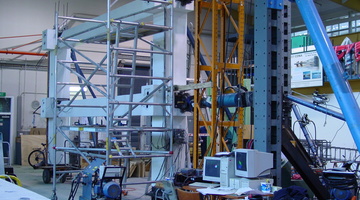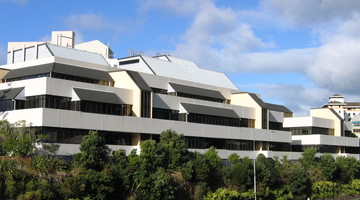Dr Stefano Pampanin from the University of Canterbury believes buildings can be protected from earthquakes by a combination of different available technologies, such as ductile1 design, base isolation2, bracing or rocking systems.
UPDATE
This video was recorded prior to the 2010 and 2011 Canterbury earthquakes. In it Stefano mentions the Christchurch Women's Hospital. This building performed well during these earthquakes with staff reporting that the base-isolated building did not shake wildly but instead moved gently from side to side. It was operational immediately after the large quakes, unlike neighbouring hospital buildings that sustained significant damage.
Transcript
DR STEFANO PAMPANIN
Base isolation, again, does work very well. Is it something that we can do for every building, and is base isolation system worth doing for every building? The answer is no. Now, we can have base isolation system being implemented - it would be very expensive - but it cannot be done for a normal office, apartments, and a normal house.
I come from a country where the most of the developments in building has been done after the Second World War, so in the 1950s and 1960s, and they were cheap apartments, flats, reinforced concrete, 10 storey high, for the population3. So of course you cannot do a base isolation for that, it would be too expensive. If you go to Japan, though, you will see base isolation building widely adopted because they are talking about implementing this system for a really high-rise building.
Although even base isolation itself is not capable of taking care of any – everything. So typically a designer will be trying to take three, four, five different technology, and smartly - that’s why he’s supposed to be a designer - will be introducing them in the whole design of the building to exploit4 the technology where the best solution could be. For example in Christchurch there is a new building which is the Women Christchurch Hospital, there is a base isolation underneath and then what we call the superstructure is implementing other two technology. One is a steel brace, beam, very stiff, such that the shaking would be slowing down, and the other one is using what we call ductile design, which is a way to dissipate this energy coming from the earthquake. So a combination of different technology is typically the best way to go.
Acknowledgements:
Parliamentary Service (New Zealand)



